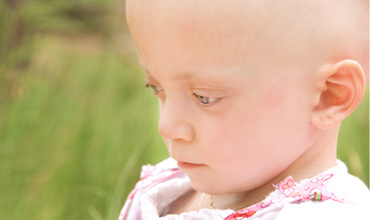Burden of Childhood Diseases at Baptist Hospital Mutengene: A Retrospective Survey

Abstract:
Childhood diseases, pediatric cancer burden, Baptist
Hospital Mutengene, Cameroon.
The
pattern of disease burden has changed worldwide in past decades. Non communicable
diseases, including cancers, are the main cause of mortality and morbidity in both
high income countries (HICs)and low and middle income countries (LMICs). Pediatric
oncology is not seen as a child health priority in most LICs like Cameroon amongst
many others where pediatric cancer data are fragmented. The objective of this study
was to generate data on childhood diseases at Baptist Hospital Mutengene(BHM) and
to measure the burden attributed to pediatric cancerusing incidence, mortality,
cancer related admission and quality of life in cancer survivors in order to guide
resource allocation to the pediatric ward. A retrospective cohort study and a secondary
data analysis were conducted from 2006 to 2013. Communicable diseases (malaria,
chest infection and diarrhea) constitute the main burden of childhood diseases at
BHM based on incidence and mortality. Pediatric cancers led by Burkitt lymphoma
are contributing to an extent to the burden of childhood diseases with a proportionate
incidence of 1 to 2 cases per 1000 per year and an admission rate of 31.8 per 1000
per year. 26 (13%) of 193 Burkitt lymphoma patients suffered a disability in the
course of their illness and treatment and 2 (7.6% of the 26 but 1% of the 193) had
a permanent disability due to Burkitt lymphoma, the leading pediatric cancer at
BHM .Pediatric cancers contribute to increasing the burden of childhood diseases
at BHM based on incidence, admission rate and quality of life of cancer survivors.
References:
[1]. Magrath I, Steliarova-Foucher
E, Sidnei E, Ribeiro RC, Harif M, et al (2013). Pediatric cancer in low-income and
middle-income countries. Lancet Oncol 14: 3104–3116 [PubMed]
[2]. Gupta S, Rivera-Luna
R, Ribeiro RC et al (2014). Pediatric Oncology as the Next Global Child Health Priority:
The need for national childhood cancer strategies in low- and middle-income countries,
PLoS Med. Jun 2014; 11(6): e1001656. Published online Jun 17, 2014.doi: 10.1371/journal.pmed.1001656
PMCID: PMC4061014
[3]. Howard SC, Metzger
ML, Wilimas JA, Quintana Y, Pui C-H, et al (2008). Childhood cancer epidemiology
in low-income countries. Cancer 112: 461–472 [PubMed]
[4]. Jemal A, Bray
F, Forman D, O’Brien M, et al (2012).Cancer burden in Africa and opportunities for
prevention. Cancer 2012;118:4372-84. VC 2012 American Cancer Society.
[5]. Gopal S, Wood
WA,Hesseling PB, Mitsuyasu RT (2012).Meeting the challenge of hematologic malignancies
in sub-Saharan Africa. www.bloodjournal.org online March 28, 2012 doi:10.1182/blood-2012-02-387092
originally published online 2012 119: 5078-5087.
[6]. World Child
Cancer (2013). Project facts sheet for Cameroon. www.worldchildcancer.org
[7]. Melissa MH;
Ann CM; Yutaka Y, et al(2013) Health Status of Adult Long-term Survivors of Childhood
Cancer: A Report From the Childhood Cancer. JAMA. 2003;290(12):1583-1592 (doi:10.1001/jama.290.12.1583)
[8]. Jeremy S. Slone mail, Chunda-Liyoka C, Perez M et al(2013).Pediatric Malignancies,
treatment outcomes and abandonment of pediatric cancer treatment in Zambia: Published:
February 21, 2014 DOI: 10.1371/journal.pone.008910
[9]. Enow-Orock G.
E, Pondy A, Doumpe P, Koki N, Lemerle J(2012).A pediatric oncology group pilot study
on childhood cancers at the Chantal Biya Foundation Yaounde, Cameroon: Report of
350 cases. Scientific research and essays Vol. 7(25), pp. 2237-2241, 5 July, 2012.
Available online at http://www.academicjournals.org/SRE
[10]. Cameroon Baptist
Convention Health Board (2013), Activity report. www.cbchealthservices.org
[11]. Enoworock G.
(2013).Childhood cancer in Yaoundé, Cameroon. Proceedings of the second CBC childhood
cancer symposium.A decade of dedication. 29 Nov 2013. CBC health services complex,
Mutengene.
[12]. Jeong Lim Kim,
Kyoung-Hee Cho, Eun-Cheol,Woo Hyun Cho (2014). A single measure of cancer burden
combining incidence with mortality rates for worldwide application. Asian Pac J
Cancer Prev, 15 (1), 433-439.
[13]. Bray F, Ren
JS, Masuyer E, Ferlay J (2013). Global estimates of cancer prevalence for 27 sites
in the adult population in 2008. Int J Cancer, 132, 1133-45.
[14]. Bray F, MÃller
B (2006). Predicting the future burden of cancer. Nat Rev Cancer, 6, 63-74
[15]. Valsecchi MG,
Steliarova-Foucher E (2008). Cancer registration in developing countries: luxury
or necessity? Lancet Oncol 9: 159–167. doi: 10.1016/s1470-2045(08)70028-7
[16]. Ribeiro RC,
Steliarova-Foucher E, Magrath I, Lemerle J, Eden T, et al (2008). Baseline status
of paediatric oncology care in ten low-income or mid-income countries receiving
my child matters support: a descriptive study. Lancet Oncol 9: 721–729. doi: 10.1016/s1470-2045(08)70194-3
[17]. Bonita R, BeagleholeR,KjellströmT
(2006). Measuring health and disease Chapter 2, Basic epidemiology 2ndedition.
World Health Organization
[18]. Stefan DC,
Baadjes B, Kruger M (2014).Incidence of childhood cancer in Namibia-the need for
registries in Africa.The Pan African Medical Journal. 2014;17:191. Permanent link:
http://www.panafrican-med journal.com/content/article/17/191/full. Doi:10.11604/pamj.2014.17.191.3830
[19]. UNAIDS 2014
PROGRESS REPORT ON THE GLOBAL PLAN towards the elimination of new HIV infections
among children by 2015 and keeping their mothers alive
[20]. WHO (2014).World
malaria report, global malaria programme, World Health Organization, 2014 updates
[21]. Hesseling PB.(2012).
The SIOP Burkitt lymphoma pilot study in Malawi. Medical and pediatric oncology
200; 34:142

